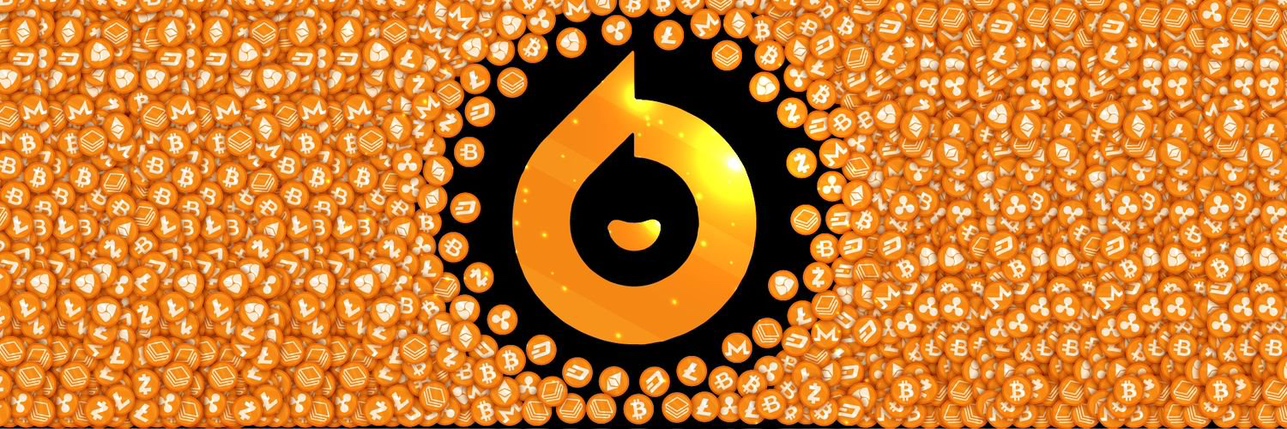
Prezzo di TrueUSDTUSD
Convertitore da TUSD a EUR
Prezzo live di TrueUSD in EUR di oggi
Pensi che il prezzo di TrueUSD aumenterà o calerà oggi?
Info sul mercato di TrueUSD
A proposito di TrueUSD (TUSD)
A proposito di TrueUSD
TrueUSD (TUSD) è la prima stablecoin peggata (ancorata) al dollaro statunitense interamente controllata da un istituto finanziario statale e verificata pubblicamente da società indipendenti. Lanciata nel marzo 2018, mira a essere una stablecoin sicura e trasparente. In seguito al boom del mercato crypto e a causa dell’instabilità intrinseca delle varie valute digitali, è cresciuta l’esigenza di avere un asset digitale stabile. TrueUSD è nata proprio per colmare questa lacuna.
TrustToken, la società che emette TrueUSD, è registrata come Money Service Business (società di servizi monetari) presso il FinCEN – acronimo che sta per Financial Crimes Enforcement Network – degli Stati Uniti. I fondi sono regolamentati dalla divisione finanziaria che fa capo al Department of Business Industry dello Stato del Nevada. In aggiunta, la garanzia collaterale di TrueUSD è sottoposta a revisione contabile da parte di Cohen Company e Armanino, entrambe società di contabilità tra le più importanti al mondo.
A differenza di criptovalute come Bitcoin ed Ethereum, il cui valore può subire fluttuazioni vertiginose, TrueUSD è peggata al valore del dollaro USA (USD). Per ogni TrueUSD in circolazione, esiste una quantità equivalente di USD depositata in conti escrow (conti di deposito fiduciario controllati da terze parti). Il peg garantisce la stabilità del valore e rafforza la fiducia degli utenti.
Pienamente conforme alle normative statunitensi, TrueUSD si attiene a tutte le linee guida vigenti in materia. Controlli regolari da parte di società terze garantiscono l’integrità della crypto, rendendola una scelta privilegiata per gli utenti che hanno come priorità la trasparenza e la sicurezza.
La stabilità di TrueUSD ha attratto diversi utenti, tra cui trader, aziende e istituzioni finanziarie. È ampiamente utilizzata nelle coppie dei crypto exchange e come metodo di pagamento nei casi in cui le operazioni bancarie tradizionali potrebbero risultare lente o costose.
Risorse utili
Sito web ufficiale: https://tusd.io/
Come funziona TrueUSD
TrueUSD utilizza un meccanismo noto come tokenizzazione per poter rappresentare la valuta del mondo reale sulla blockchain. Quando un utente acquista TrueUSD con USD, l’importo equivalente di USD viene conservato presso una banca fiduciaria partner specializzata. I token TrueUSD vengono quindi mintati (coniati) e inviati all’utente.
Riscattare TrueUSD in USD è semplice. Gli utenti inviano i TrueUSD allo smart contract, l’equivalente in USD viene sbloccato dal conto di deposito e inviato al conto bancario dell’utente. I TrueUSD corrispondenti vengono quindi bruciati (distrutti), garantendo il peg 1:1.
Il funzionamento di TUSD è regolato da smart contract sulla blockchain di Ethereum. Si tratta di contratti automatizzati che gestiscono l’emissione e il riscatto dei token in modo sicuro. L’intero processo è trasparente e può essere verificato in qualsiasi momento, aumentando ulteriormente il livello di fiducia.
Il token TUSD ha diverse funzioni nell’ecosistema finanziario. La stabilità lo rende una scelta ideale per tutelarsi dalla volatilità di altri asset. Inoltre, svolge un ruolo cruciale nelle piattaforme di finanza decentralizzata (DeFi), fornendo uno strumento stabile per vari servizi finanziari.
Nonostante il successo, TrueUSD non è tuttavia priva di sfide. La dipendenza dalle banche tradizionali e dalla compliance normativa può talvolta rallentarne i processi. I critici sostengono inoltre che la centralizzazione nella gestione dei conti escrow contraddice la natura decentralizzata delle criptovalute.
Conclusione
TrueUSD si è ritagliata uno spazio nel mondo volatile delle criptovalute presentandosi come un asset digitale stabile e trasparente. La compliance alle normative, insieme alla capacità di mantenere il peg 1:1 con il dollaro USA, ha portato a un’adozione e a una fiducia diffuse. Gli smart contract, la tokenizzazione e i processi di riscatto mettono in evidenza un solido sistema che sfrutta i vantaggi della blockchain mitigandone i rischi. Con la continua evoluzione del panorama della finanza digitale, il ruolo delle stablecoin come TrueUSD potrebbe diventare ancora più significativo, plasmando il futuro delle economie tradizionali e digitali.
Rapporto di analisi IA su TrueUSD
Storico prezzi di TrueUSD (EUR)
 Prezzo più basso
Prezzo più basso Prezzo più alto
Prezzo più alto 
Qual è il prezzo più alto di TrueUSD?
Qual è il prezzo più basso di TrueUSD?
Previsione del prezzo di TrueUSD
Quando è il momento giusto per acquistare TUSD? Dovrei acquistare o vendere TUSD ora?
Quale sarà il prezzo di TUSD nel 2026?
Nel 2026, sulla base di un tasso di crescita annuale previsto del +5%, il prezzo di TrueUSD (TUSD) dovrebbe raggiungere €0.8912; sulla base del prezzo previsto per quest'anno, il ritorno sugli investimenti cumulativo derivante dall'holding di TrueUSD fino alla fine del 2026 raggiungerà +5%. Per maggiori dettagli, consulta: Previsioni del prezzo di TrueUSD per il 2025, 2026, 2030-2050Quale sarà il prezzo di TUSD nel 2030?
Promozioni popolari
Prezzi di TrueUSD globali
Come acquistare TrueUSD(TUSD)

Crea il Tuo Conto Bitget Gratuito

Verifica il Tuo Conto

Converti TUSD in EUR
FAQ
Chi emette e regolamenta TrueUSD (TUSD)?
Posso convertire TrueUSD (TUSD) in USD?
Come fa TrueUSD (TUSD) a mantenere il suo valore?
L'utilizzo di TrueUSD comporta delle spese?
TrueUSD (TUSD) è sicuro?
In cosa si differenzia TrueUSD (TUSD) da altre monete stabili come USD Coin (USDC) o Tether (USDT)?
Qual è il prezzo attuale di TrueUSD (TUSD)?
Come mantiene TrueUSD la sua stabilità di prezzo?
TrueUSD è un buon investimento in questo momento?
Dove posso acquistare TrueUSD (TUSD)?
Quali fattori potrebbero influenzare il prezzo di TrueUSD?
TrueUSD (TUSD) può essere convertito nuovamente in USD?
Qual è il tetto di offerta di TrueUSD?
TrueUSD è disponibile per il staking o per guadagnare interessi?
Come posso conservare TrueUSD in modo sicuro?
Quali sono le commissioni associate all'acquisto o alla vendita di TrueUSD su Bitget Exchange?
Qual è il prezzo attuale di TrueUSD?
Qual è il volume di trading di 24 ore di TrueUSD?
Qual è il massimo storico di TrueUSD?
Posso acquistare TrueUSD su Bitget?
Posso ottenere un guadagno costante investendo in TrueUSD?
Dove posso acquistare TrueUSD con la commissione più bassa?
Prezzi delle criptovalute correlate
Dove posso acquistare TrueUSD (TUSD)?
Sezione video: verifica rapida e accesso rapido al trading

Convertitore da TUSD a EUR
Risorse di TUSD
Tag:
Bitget Insights





Trading
Earn
TUSD/USDT
SpotPrezzi delle monete listate di recente su Bitget








